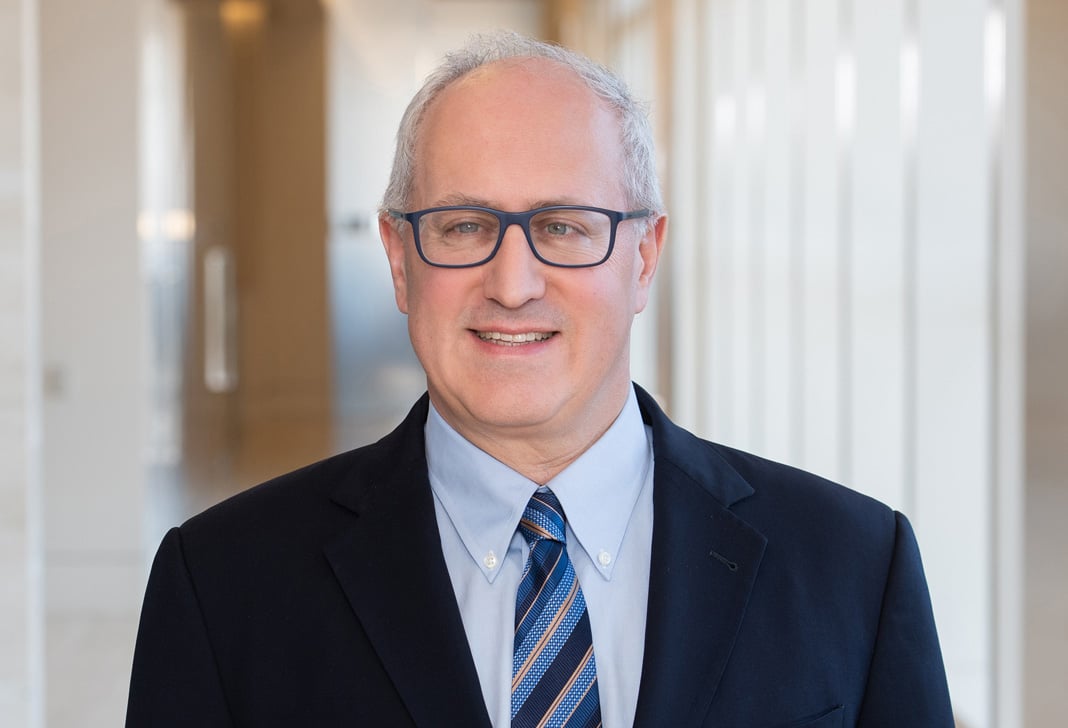
HHS Announces Next Generation ACO Model of Payment and Care Delivery
On March 10, 2015, the U.S. Department of Health and Human Services (“HHS”) announced the Next Generation Accountable Care Organization Model (“Next Gen ACO Model”), a new initiative sponsored by the Centers for Medicare & Medicaid Services’ (“CMS”) Innovation Center. According to HHS Secretary Sylvia Mathews Burwell, the Next Gen ACO Model “is part of [HHS’s] larger effort to set clear, measurable goals and a timeline to move the Medicare program—and the health care system at large—toward paying providers based on the quality, rather than quantity of care they give patients.” The Next Gen ACO Model is a five-year model, scheduled to begin in January 2016, that seeks to test whether strong financial incentives for participating ACOs (“Next Gen ACOs”) can improve health outcomes and reduce expenditures for Medicare fee-for-service beneficiaries.
Focus of the Next Gen ACO Model
According to the Request for Applications (“RFA”), core principles of the Next Gen ACO Model include:
- Creating a financial model with long-term sustainability;
- Utilizing a prospectively set benchmark that (i) rewards quality, (ii) rewards both attainment of, and improvement in, efficiency, and (iii) ultimately transitions away from updating benchmarks based on a Next Gen ACO’s historical expenditures and focuses on relative efficiency;
- Smoothing Next Gen ACO cash flow and improving investment capabilities through alternative payment mechanisms;
- Protecting Medicare fee-for-service beneficiaries’ freedom to seek the services and providers of their choice; and
- Providing tools to Next Gen ACOs for engaging beneficiaries in their care through benefit enhancements that directly improve the patient experience and incentivize coordinated care.
Potential Participants
The Next Gen ACO Model is an initiative for organizations that demonstrate significant experience in coordinating care for patient populations. ACOs that have participated in the Medicare Shared Savings Program (“MSSP”) or the Pioneer ACO Model in the year prior to entry into the Next Gen ACO Model are deemed to have met certain eligibility requirements for the Next Gen ACO Model. Organizations that have not participated in the MSSP or the Pioneer ACO Model may also be eligible to participate in the Next Gen ACO Model, provided they satisfy the structural and governance requirements set forth in the RFA. With one notable difference, discussed below, these requirements are very similar to those applicable to ACOs participating in the MSSP. Although there is no limit on the number of organizations that may participate in the Next Gen ACO Model, CMS is anticipating that only 15 to 20 will be selected.
Design Elements of the Next Gen ACO Model
The following elements characterize the Next Gen ACO Model:
Focus on Medicare Providers/Suppliers. “ACO participants”—individuals or groups of Medicare providers/suppliers that are identified by a single Medicare-enrolled tax identification number (“TIN”)—are the linchpins and focus points of the MSSP model. Under the MSSP model, an ACO may be formed only by one or more “ACO participants.” All individual providers or suppliers who bill for services provided to Medicare beneficiaries under a Medicare billing number associated with the TIN of an ACO participant (e.g., all physicians in a group practice) must participate in an MSSP ACO and be bound to the program’s participation requirements. The rigidities of the MSSP’s participation framework, while valuable for ascertaining accountability and oversight, do not necessarily account for the contributions of specific providers involved in care coordination for ACO beneficiaries.
The Next Gen ACO model departs from this singular focus on the Medicare-enrolled TIN and instead looks to “Next Generation Providers/Suppliers”—Medicare providers or suppliers, identified by a National Provider Identification (“NPI”) or CMS Certification Number (“CCN”) who bill for items and services provided to Medicare beneficiaries under a billing number assigned to a TIN—as the building blocks of a Next Gen ACO. As a consequence, Next Gen ACOs, unlike their MSSP counterparts, are free to pick and choose individual physicians from within a single group practice to participate in the Next Gen ACO. This feature of the Next Gen ACO Model affords Next Gen ACOs significant flexibility to select specific providers who are best able to contribute to the ACO’s success.
Provider Choice of Risk Arrangements. The Next Gen ACO Model provides organizations that are willing to assume significant levels of financial risk with opportunities for greater reward than is currently available under either the MSSP or the Pioneer ACO Model. To current ACO participants, the shift in CMS’s approach to risk bearing should not be unexpected—the MSSP and Pioneer ACO Model offer only “upside only” options for a limited amount of time (allowing participating ACOs to share in savings, to the extent they occur, but not losses), and then require that the ACOs transition gradually into risk-bearing arrangements in subsequent performance years. Next Gen ACOs will not have the option of deciding whether or not to take on risk from the beginning; only how much.
The Next Gen ACO Model offers participating Next Gen ACOs a choice of two risk arrangements: increased shared risk and full performance risk. Under the increased shared risk arrangement, the Next Gen ACO shares up to 80 percent of Medicare Parts A and B expenditures during Performance Years 1–3 (or Performance Years 1–2 for ACOs participating in the second cycle) and 85 percent of Medicare Parts A and B expenditures during Performance Years 4–5 (or Performance Years 3–4 for ACOs participating in the second cycle). Under the full performance risk option, Next Gen ACOs are responsible for 100 percent of Medicare Parts A and B expenditures. In both arrangements, the sharing rate is higher than in the MSSP and Pioneer ACO Model, individual beneficiary expenditures are capped at the 99th percentile of expenditures, and aggregate savings or losses will be capped at 15 percent of the Next Gen ACO’s benchmark (discussed below). All Next Gen ACOs will be required to have in place a financial guarantee sufficient to cover potential losses.
Prospective Benchmarking. Providers who were reluctant to engage in accountable care because they regarded it as an imperfect, temporary rewards system (in which savings motivators decrease as benchmarks are satisfied, leaving no savings left to share) should take note of the Next Gen ACO Model’s benchmarking methodology. A prospectively set benchmark, against which a Next Gen ACO’s Medicare Parts A and B expenditures will be measured to determine shared savings or losses, is a core component of the Next Gen ACO Model. The prospectively set benchmark distinguishes the Next Gen ACO Model from the MSSP and Pioneer ACO Model, both of which utilize a retrospectively determined benchmark. Prior to the start of each Performance Year, CMS will establish a benchmark for each participating Next Gen ACO by: (i) determining the Next Gen ACO’s historic baseline expenditures, which during Performance Years 1–3 (or Performance Years 1–2 for ACOs participating in the second cycle) will be based on a single baseline year, (ii) applying regional and national projected cost trends, (iii) adjusting for risk using the CMS Hierarchical Condition Category model, and (iv) applying a discount. The discount will be determined by a combination of the Next Gen ACO’s quality performance and its relative efficiency, measured on both a regional and national basis.
According to CMS, under this benchmarking approach, Next Gen ACOs, like their MSSP counterparts, must demonstrate year-to-year improvement over historic expenditures in order to achieve savings. However, the magnitude by which a Next Gen ACO must improve in order to achieve savings will vary based on the Next Gen ACO’s relative efficiency. CMS will release final specifications in a forthcoming financial methodology paper, which will be made available to potential participants prior to signing a Participation Agreement.
Provider Choice of Payment Mechanisms. The Next Gen ACO Model is designed to offer Next Gen ACOs the opportunity for stable and predictable cash flow and to test the effectiveness of alternative payment mechanisms in facilitating investments in infrastructure and care coordination. The Next Gen ACO Model provides Next Gen ACOs the opportunity to strategically mitigate the practical impact risk-bearing may have upon their operations by choosing from a menu of payment options:
Normal Fee-for-Service. Under this option, Next Generation Providers/Suppliers continue to submit claims to Medicare and to be reimbursed pursuant to the applicable Medicare fee schedule.
Normal Fee-for-Service Plus Infrastructure Payments. Under this option, Next Generation Providers/Suppliers continue to submit claims to Medicare and to be reimbursed pursuant to the applicable Medicare fee schedule. In addition, the Next Gen ACO is paid a monthly per-beneficiary-per-month (“PBPM”) infrastructure payment, not to exceed $6 per beneficiary per month. The additional PBPM payment is intended to help support the Next Gen ACO’s investment in infrastructure for ACO activities. Such infrastructure payments will not be included in the calculation of the Next Gen ACO’s Medicare expenditures but will be recouped by CMS during each year-end expenditure reconciliation process, regardless of whether the Next Gen ACO realized savings or losses.
Population-Based Payments. If a Next Gen ACO selects this option, CMS will pay Next Generation Providers/Suppliers Medicare fee-for-service payments reduced by a percentage amount determined by the Next Gen ACO and will pay the projected total annual amount taken out of such fee-for-service rates to the Next Gen ACO in monthly payments. The amount of the discount applied to the Medicare fee for service rates must be agreed upon by Next Generation Providers/Suppliers, but it can vary among different provider types. The monthly payment can be used by the Next Gen ACO for investment in infrastructure for Next Gen ACO activities or used as a risk pool to incentivize Next Generation Providers/Suppliers.
Capitation. Under this last option, which will not be available to Next Gen ACOs until the 2017 Performance Year, CMS will estimate the Next Gen ACO’s total annual expenditures and pay that projected amount—less an amount withheld by CMS to cover care by providers other than Next Generation Providers/Suppliers and “Capitation Affiliates” (described below)—to the Next Gen ACO as a PBPM payment. The Next Gen ACO will be responsible for paying claims to the Next Gen ACO’s contracted providers/suppliers and Capitation Affiliates, at mutually agreed-upon rates that may be less than 100 percent of Medicare fee-for-service rates. CMS will retain responsibility for paying claims received from providers and suppliers not contracted with the Next Gen ACO.
A Next Gen ACO may change its preferred payment mechanism each Performance Year, providing opportunities for the Next Gen ACO and its Next Generation Providers/Suppliers to transition from fee-for-service to a full-risk model. Note that some of these payment mechanisms (capitation in particular) may implicate state insurance laws governing risk-bearing entities. CMS has made clear that entry into the Next Gen ACO program will not absolve participants from state law compliance responsibilities.
Beneficiary Engagement. As with the MSSP and Pioneer ACO models, freedom of beneficiary choice is a key tenet of the Next Gen ACO Model. However, the Next Gen ACO Model includes a number of features that are intended to encourage care coordination and closer care relationships between a Next Gen ACO and Medicare beneficiaries.
First, participating Next Gen ACOs may choose to avail themselves of certain Medicare payment rule waivers that will allow the Next Gen ACO to offer enhanced services to Medicare beneficiaries. One waiver eases the supervision requirements for the billing of home health visits, affording beneficiaries enhanced access to postdischarge home health visits. Another eliminates the requirement of a three-day inpatient stay prior to a skilled nursing facility (“SNF”) admission. The last expands opportunities for the use of telemedicine services by waiving the requirement that beneficiaries be located in a rural area and at a specific type of originating site in order to be eligible to receive such services.
Second, CMS will augment the methodology used to attribute beneficiaries to a Next Gen ACO (the same methodology used under the Pioneer ACO model) by providing beneficiaries the opportunity to voluntarily choose to be “aligned” with a specific Next Gen ACO. A beneficiary’s voluntary alignment with a Next Gen ACO will supersede any claims-based attribution. Moreover, Next Gen ACOs will be permitted to communicate directly with beneficiaries to discuss the voluntary alignment option and the potential benefit enhancements associated with such alignment, as long as such communications are approved in advance by CMS or satisfy requirements to be specified in the Next Gen ACO’s participation agreement with CMS.
Finally, CMS will offer cash rewards of up to $50 per year to beneficiaries who seek care through their aligned Next Gen ACO. CMS will notify aligned/attributed beneficiaries of their eligibility for a reward and will refer them to lists of the Next Gen ACO’s Next Generation Providers/Suppliers, “Preferred Providers,” and “Affiliates” (each described below). A beneficiary aligned/attributed to a Next Gen ACO will earn a cash reward if 50 percent or more of the beneficiary’s encounters are with a Next Gen ACO’s Next Generation Providers/Suppliers, “Preferred Providers,” and “Affiliates.”
Preferred Providers and Affiliates. The Next Gen ACO Model provides Next Gen ACOs with opportunities to collaborate with health care providers who are not Next Generation Providers/Suppliers but who nonetheless may contribute to the goals of a Next Gen ACO by facilitating its care coordination activities. The next Gen ACO Model defines three new types of provider with whom or with which a Next Gen ACO may have relationships: “Preferred Providers,” “Capitation Affiliates,” and “SNF Affiliates.”
Preferred Providers. “Preferred Providers” are providers selected by the Next Gen ACO for their ability to contribute to the Next Gen ACO’s success. The beneficiary alignment/attribution process will not take into account beneficiary encounters with Preferred Providers, nor will the services of Preferred Providers be considered for quality reporting by the Next Gen ACO. However, through a contractual relationship with the Next Gen ACO, Preferred Providers may offer the benefit enhancements mentioned above (e.g., expanded telehealth services, postdischarge home health visits, and SNF admissions without the mandatory three-day inpatient stay) to a Next Gen ACO’s aligned/attributed beneficiaries. Moreover, encounters with a Preferred Provider will count toward the calculation of the cash reward offered to beneficiaries by CMS.
Capitation Affiliates. “Capitation Affiliates” are Medicare providers or suppliers who contract with a Next Gen ACO to participate in capitation and receive payment for services to aligned/attributed beneficiaries from the Next Gen ACO. As is the case with Preferred Providers, encounters with a Capitation Affiliate will count toward the calculation of the cash reward offered to beneficiaries by CMS.
SNF Affiliates. “SNF Affiliates” are SNFs to which Next Generation Providers/Suppliers or Preferred Providers may admit aligned/attributed beneficiaries according to the SNF three-day rule benefit enhancement. Encounters with SNF Affiliates also will count toward the calculation of the cash reward offered to beneficiaries by CMS.
Outcomes-Based Contracting. As a condition to participation in the Next Gen Model, Next Gen ACOs are required to engage substantially in “outcomes-based contracting” with other payers, such as commercial health plans, state Medicaid programs, and self-insured employers. More than 50 percent of a Next Gen ACO’s total patients must be covered by/subject to an outcomes-based contract by the end of the first Performance Year. CMS defines “outcomes-based contracts” as those that include shared savings and/or financial risk, patient experience evaluations, and substantial quality performance incentives. Although outcomes-based contracting initiatives are already required of Pioneer ACOs, the inclusion of outcomes-based contracting requirements in the Next Gen ACO Model appears to be part of a larger trend in which Medicare increasingly focuses on private payer arrangements as a tool to accelerate the adoption of new care delivery and payment models. The new CMS Oncology Care Model, for example, also encourages models that engage multiple payers.
Availability of Waivers and Other Regulatory Guidance
One highly desirable feature of the MSSP is the ability to utilize the Final Interim ACO Waivers Rule to create arrangements and relationships that, while in furtherance of the purposes of the ACO, might nonetheless present significant legal risk under the Federal Anti-Kickback Statute, the physician self-referral law (the “Stark Law”), and/or the Civil Monetary Penalties (“CMP”) Law. At present, no such waivers exist for the Next Gen ACO Model. HHS has indicated that it may consider issuing fraud and abuse regulatory waivers for Next Gen ACOs, and it has made clear that such regulatory waivers will be specific to the Next Gen ACO Model and may differ in scope or design from waivers granted for other programs or models, such as the MSSP. Additionally, the antitrust and tax-exempt regulatory guidance that is currently available for the MSSP does not apply to the Next Gen ACO Model.
In the absence of such waivers and regulatory guidance at this time, organizations contemplating participation in the Next Gen ACO Model are faced with planning for provider engagement in a higher risk environment. Arrangements implicating the Federal Anti-Kickback Statute, Stark Law, and CMP Law will need to be reviewed and structured to satisfy applicable safe harbors or exceptions. Issues related to market concentration, coordination of economic decisions, joint contracting, and the sharing of sensitive information will all need to be assessed for compliance with state and federal antitrust laws. Finally, tax-exempt organizations will want to ensure that their participation or sponsorship of a Next Gen ACO does not raise unrelated business income (“UBI”), excess benefit, inurement, or private benefit issues, or otherwise give rise to impermissible private use of tax-exempt bond-financed facilities, or trigger the application of Internal Revenue Code Section 501(m).
Participation Deadlines
There are two application cycles in consecutive years for the Next Gen ACO Model, with each application cycle having its own letter of intent and application submission processes. For consideration in the first cycle (which will have an initial agreement term that consists of three 12-month performance periods with the potential of two additional 12-month extensions), interested organizations must submit a nonbinding letter of intent to CMS no later than May 1, 2015 and an application no later than June 1, 2015. For consideration in the second cycle (which will have an initial agreement term that consists of two 12-month performance periods with the potential of two additional 12-month extensions), interested organizations must submit a nonbinding letter of intent to CMS no later than May 1, 2016 and an application no later than June 1, 2016 (applications will be made available in March 2016).
Jones Day will continue to monitor developments with the Next Gen ACO Model and is available to assist interested parties in applying for the initiative. Application materials and more information about the Next Gen ACO Model are available on the CMS website.
Lawyer Contacts
For further information, please contact your principal Firm representative or one of the lawyers listed below. General email messages may be sent using our “Contact Us” form, which can be found at www.jonesday.com.






